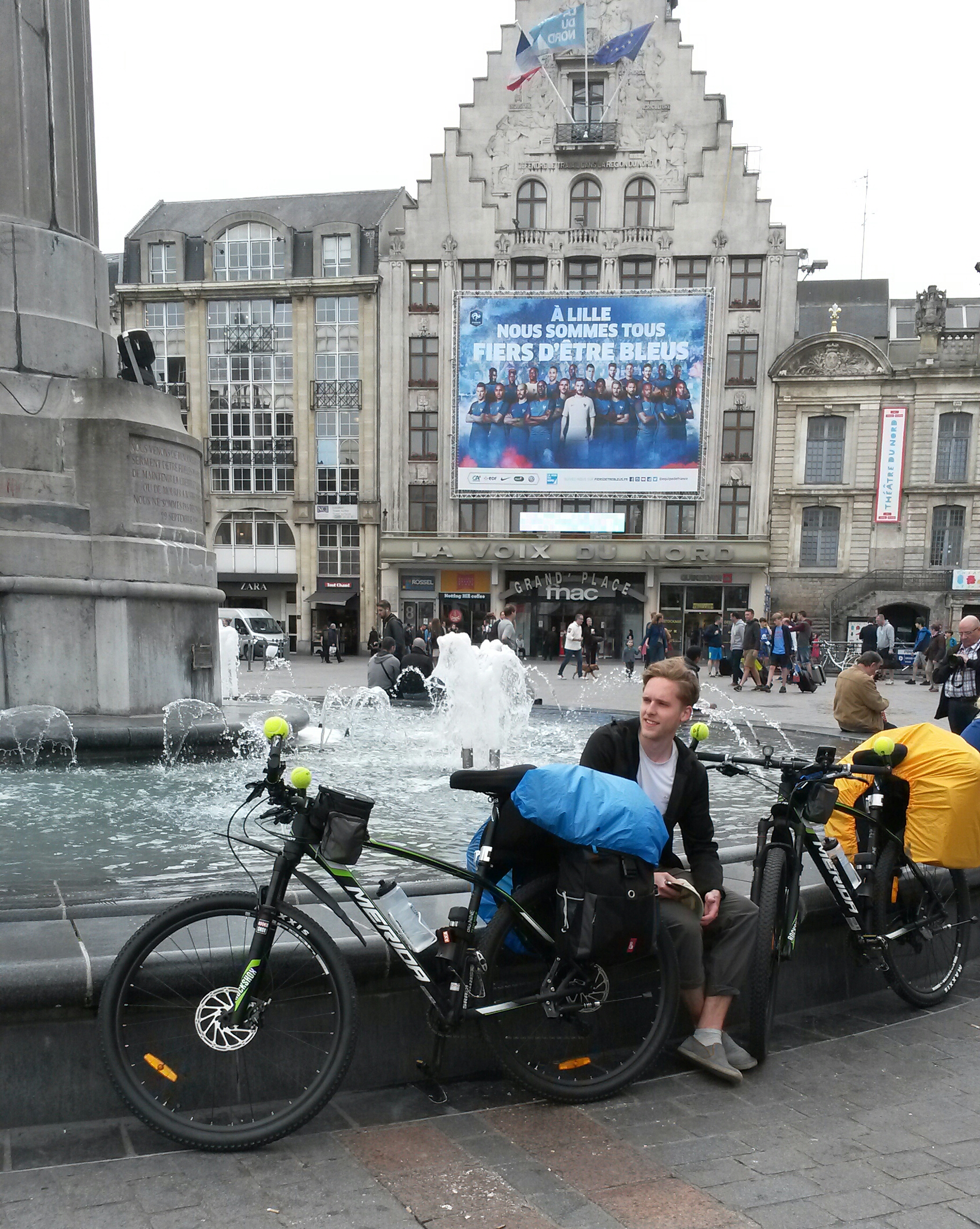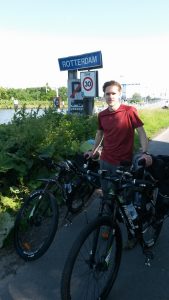The Calais ‘Jungle’ is not wild after all
[Day 13]
Last Friday, Timo and I visited the infamous ‘Calais Jungle”, a refugee camp in Northern France where currently between 4000 and 5000 people live in tents, donated camper vans and self-made cabins. Timo wrote an opinion piece on our visit which summarizes our thoughts and discussions that we had after our visit.
The Calais ‘Jungle’ is not wild after all
The French city Calais is host to over five thousand migrants, each of them living either in the infamous Jungle near the Eurotunnel or spread across different squads in the same area. The Jungle exists since early 1999 when migrants from Kosovo arrived to the French city. However, it owes much of its fame to the recent arrival of refugees who come from Afghanistan and Sudan.
Ever since this influx, media has reported on the situation in Calais with daunting stories. Images of violence and burned-down tents have made the headlines. However, the stories of the every-day life in the camp have been rather unheard. I don’t mean to say that violence is not, at least occasionally, part of the life in the Jungle, but these incidences are a few extreme examples of heightened tension in the camp and do not reflect the overall, day-to-day atmosphere. The energy on behalf of migrants who are stuck amidst their pursuit for a better life can transform into frustration and conflict, but it has also generated a near village-like organisation in the camp. Knowing that there is little going back or forth for most inhabitants, they started to create a temporary home for themselves.
During my visit there I received a hair cut in one of the hair salons in the camp, followed by a dinner in the Sunshine Restaurant that serves Afghan national cuisine, before heading over to the Darfur School where refugees can learn English and French. There are also a number of churches and mosques. Some of them are just a few meters away from each other, and people coming from either direction occasionally shake hands and engage in brief conversations. This contradicts a large part of media reports that suggest diversity in the camp has led to nothing but conflict and ethnic tension. No, it has also led to greater tolerance, perhaps even acceptance between the people with various ethnic and religious backgrounds.
If I were in the shoes of any of the people living in the Calais camp, I would sooner or later try to find ways to release my anger. A warm meal and some new clothes could not tame me if I had spent the past few months trying to reach a safer place without any success and any prospect of betterment. Speaking to a number of aid workers and refugees in the camp, I heard the same message again and again: “When frustration reaches its peak, this is when journalist come and take out their cameras. Up to this point, however, where people concentrate their energy and hopes to overcome their struggles against all odds, news often don’t make it passed the Jungle’s fences.”
Reports about conflict and violence in the Jungle point out some of the ongoing problems in the camp. These problems are not generated by the refugees in the camp, but by the circumstances they live in. Facing this reality requires engagement with refugees, recognizing their human dignity and empathizing with their challenges ahead. I feel ashamed… last time I took a pepper spray with me to the Jungle. I prepared for conflict rather than conversation. Next time, surely, I will bring a dictionary instead.
I can only add that I have never had an experience where stereotypes were proven wrong as quickly as during our visit. Everything that I have ever heard about this place was overturned over the course of five hours. From now on I will try to not call it Jungle anymore as this term does not fit the reality that we witnessed there. Yes, it is somewhat of a legal non-place, where people live in unbearable conditions and where violence does occur. But it also is a suitable example that even in the most dire circumstances humans will still be, well, just that. Alive, with dreams and hope and dignity. The most valuable lesson that we took away from this day is best expressed in the words of Samuel Goldwyn:
‘ Go see it and see for yourself why you shouldn’t go see it’ .
To be continued…






